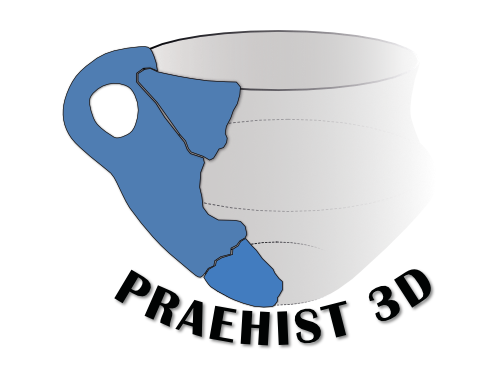from feature to model
In this year’s may, a friend of mine asked me if it would be possible to make a 3D model from one of their newly excavated features. The mentioned feature was a complex early industrial structure, that was supposed to get digitized via photogrammetry.
Within seconds, I agreed, and would have loved to visit the excavation by myself to take the needed pictures and measurements. But sadly, I don’t live near this place anymore.
So I wrote a short manual, on how to take appropriate pictures, and asked the archaeologist on the site to take them and send them to me.
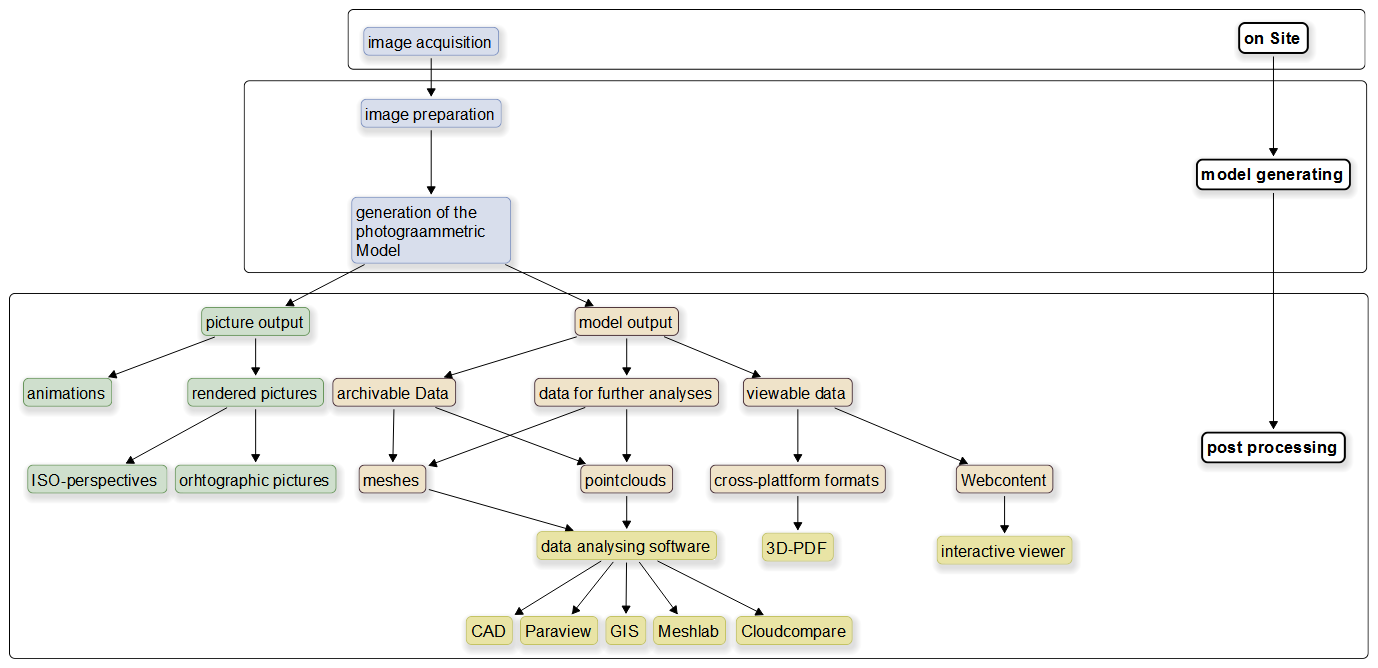
I didn’t have to wait long for the pictures. After only one day i could start the processing of the model.
Virtual excavating
I was curious about this structure because I didn’t saw it myself and only heard vague descriptions via telephone and mail. I was told that it was an early industrial facility, related to clay procession or brick manufacturing. The working hypothesis was a kind of brick kiln.
From the pictures, I did get the first impressions of the structure. I sharpened the pictures and adjusted some other parts like light and contrast and started the processing.
After the picture alignment finished and the camera positions were estimated, I did get some interesting insights of the structure. Based on the time and position of the pictures, I could reconstruct how the photographer moved in the field.
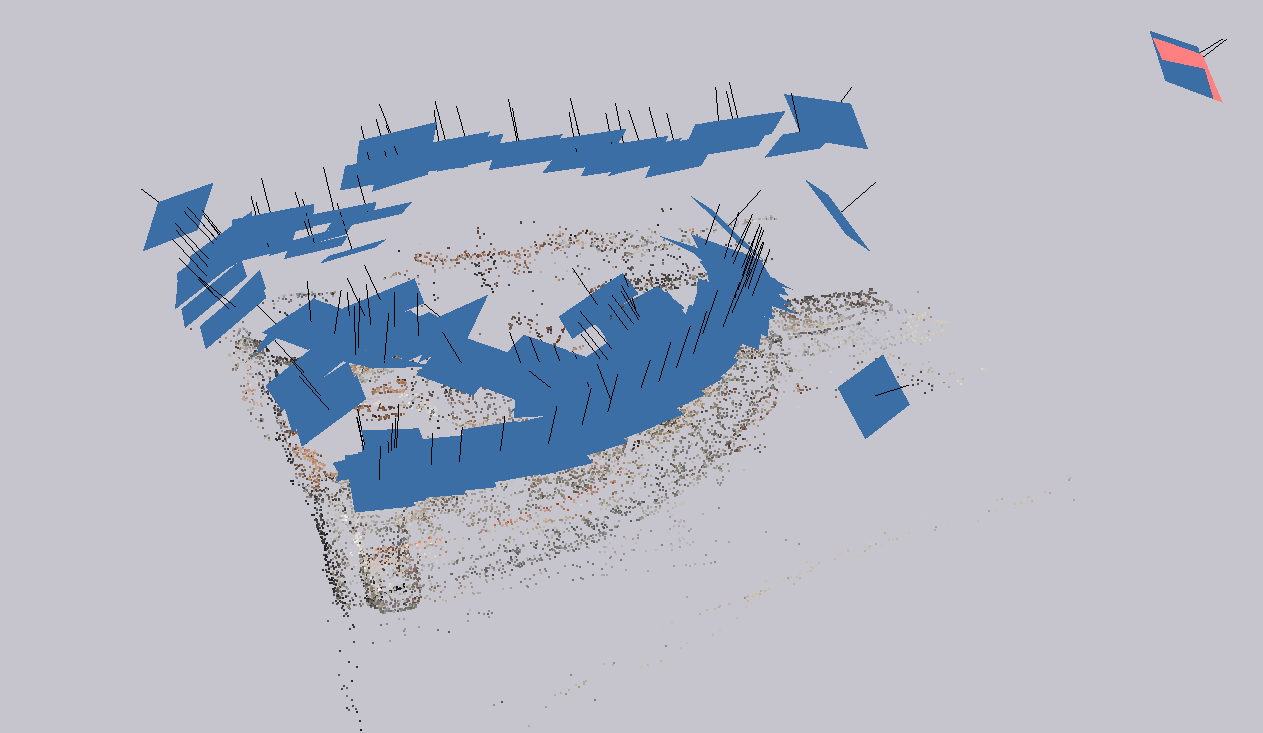
Sadly, there was a problem with the first set of photos. Because of pressure on site and really sunny weather conditions, I did get a hard shadow on the model. This doesn’t affect the geometry of the model, but the texture looks not really fine. I prefer a consistent illumination on the texture. Luckily, there was another opportunity to take pictures, so I did get another set of pictures. This time they were made on a cloudy day. This solved the illumination issue.
The model
After the model building finished, I rendered several images from different perspectives of the model. Besides a view from above, for use in a CAD or GIS plan, I rendered several ISO views.
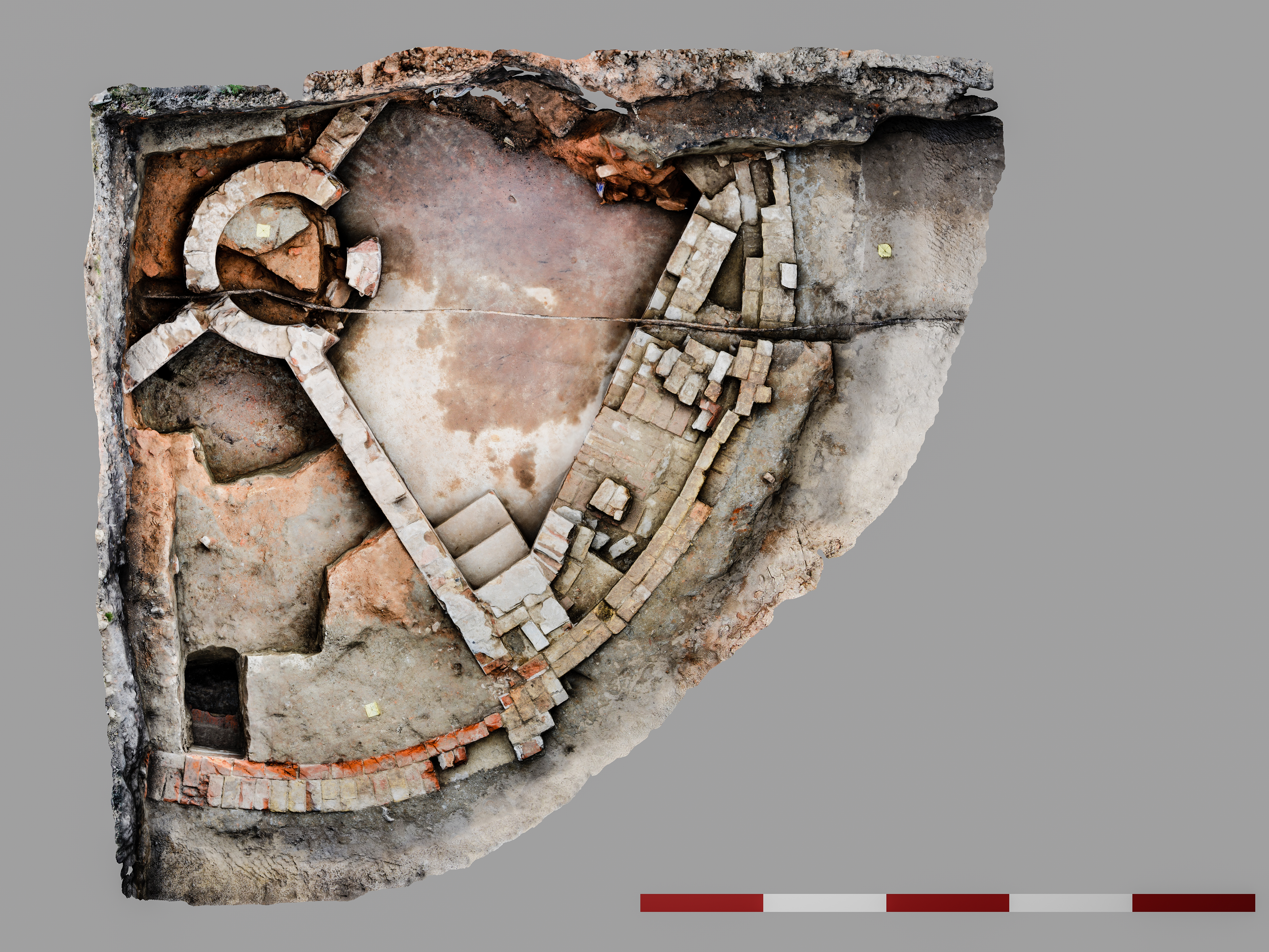
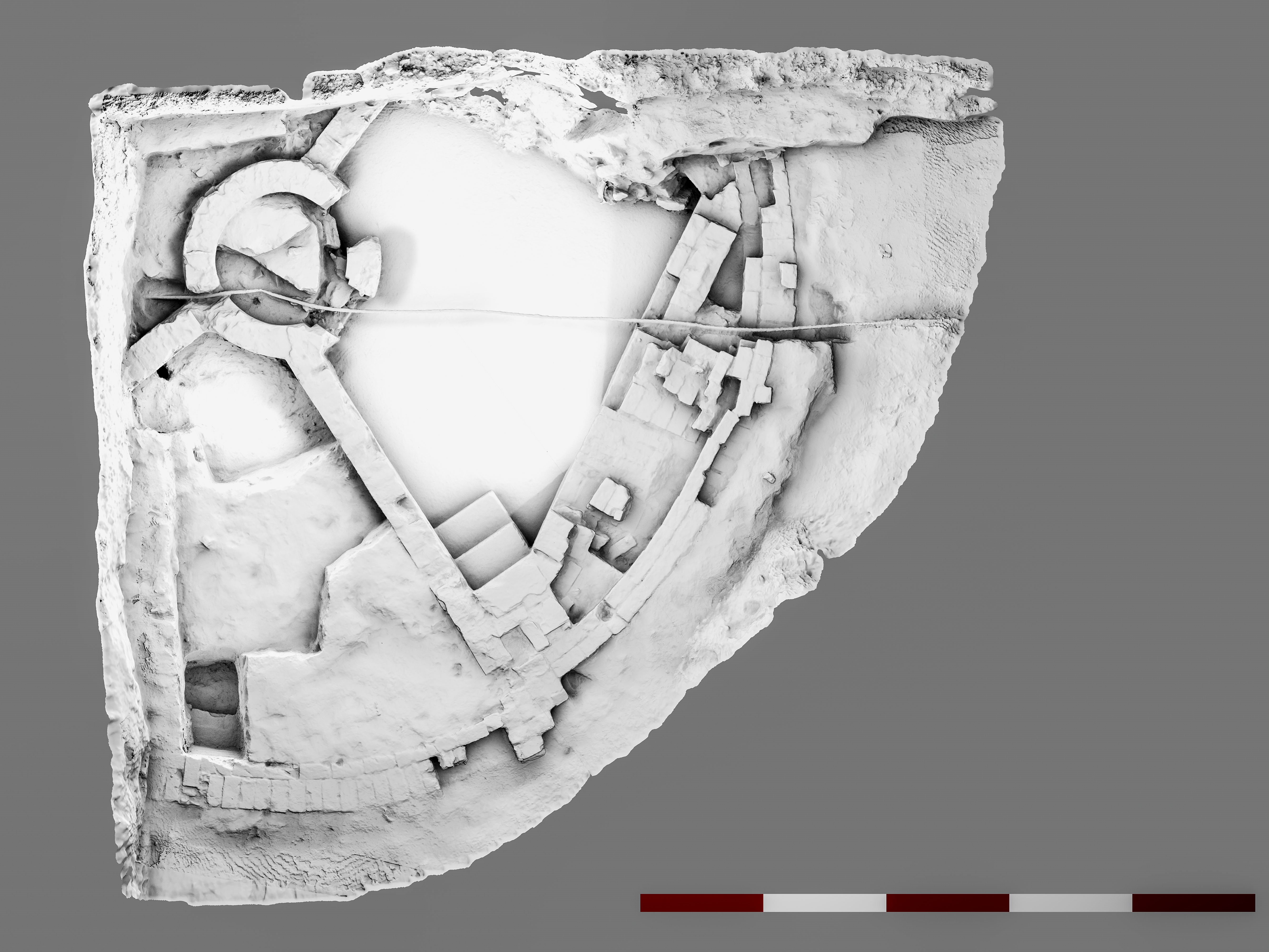
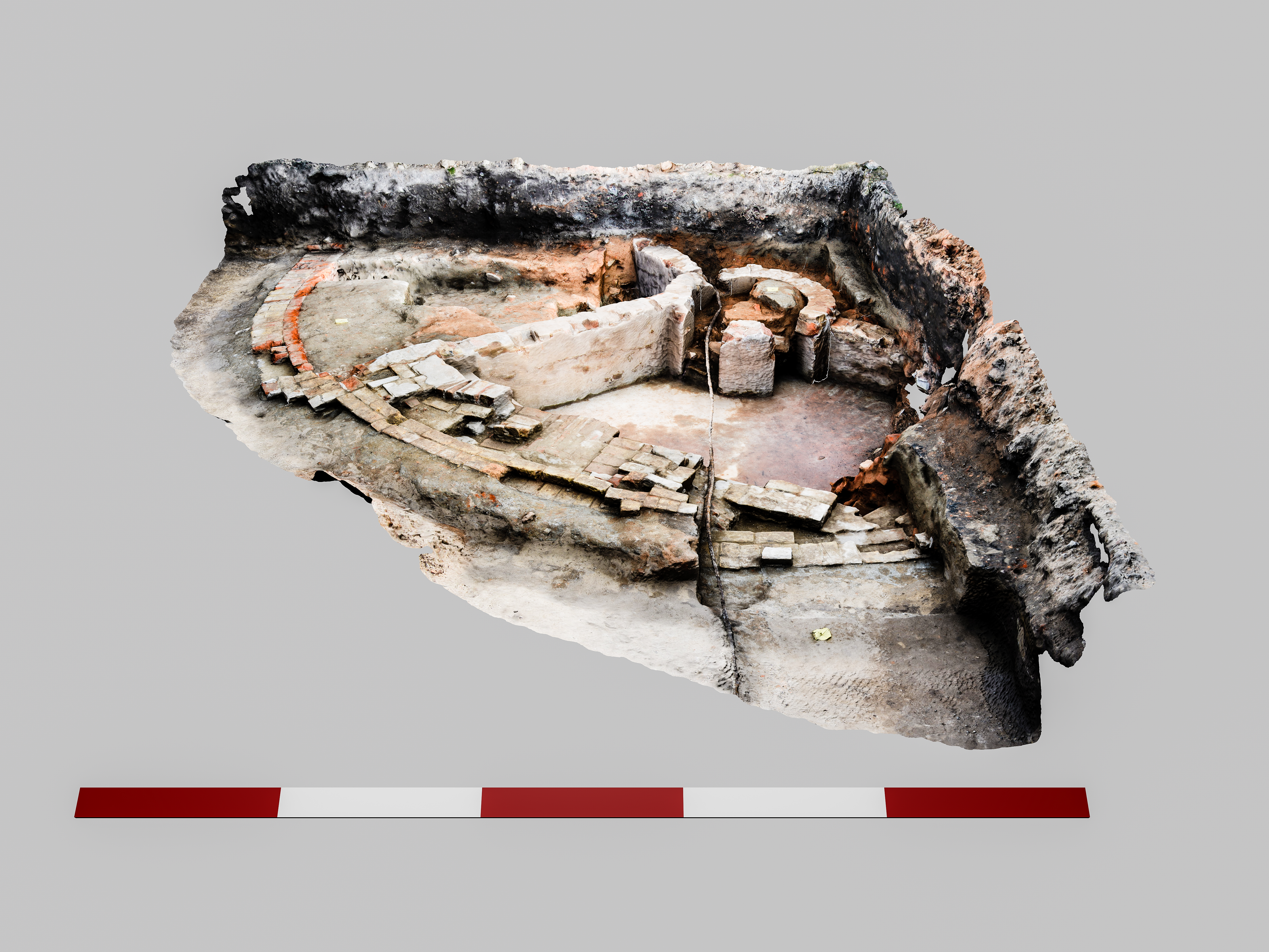
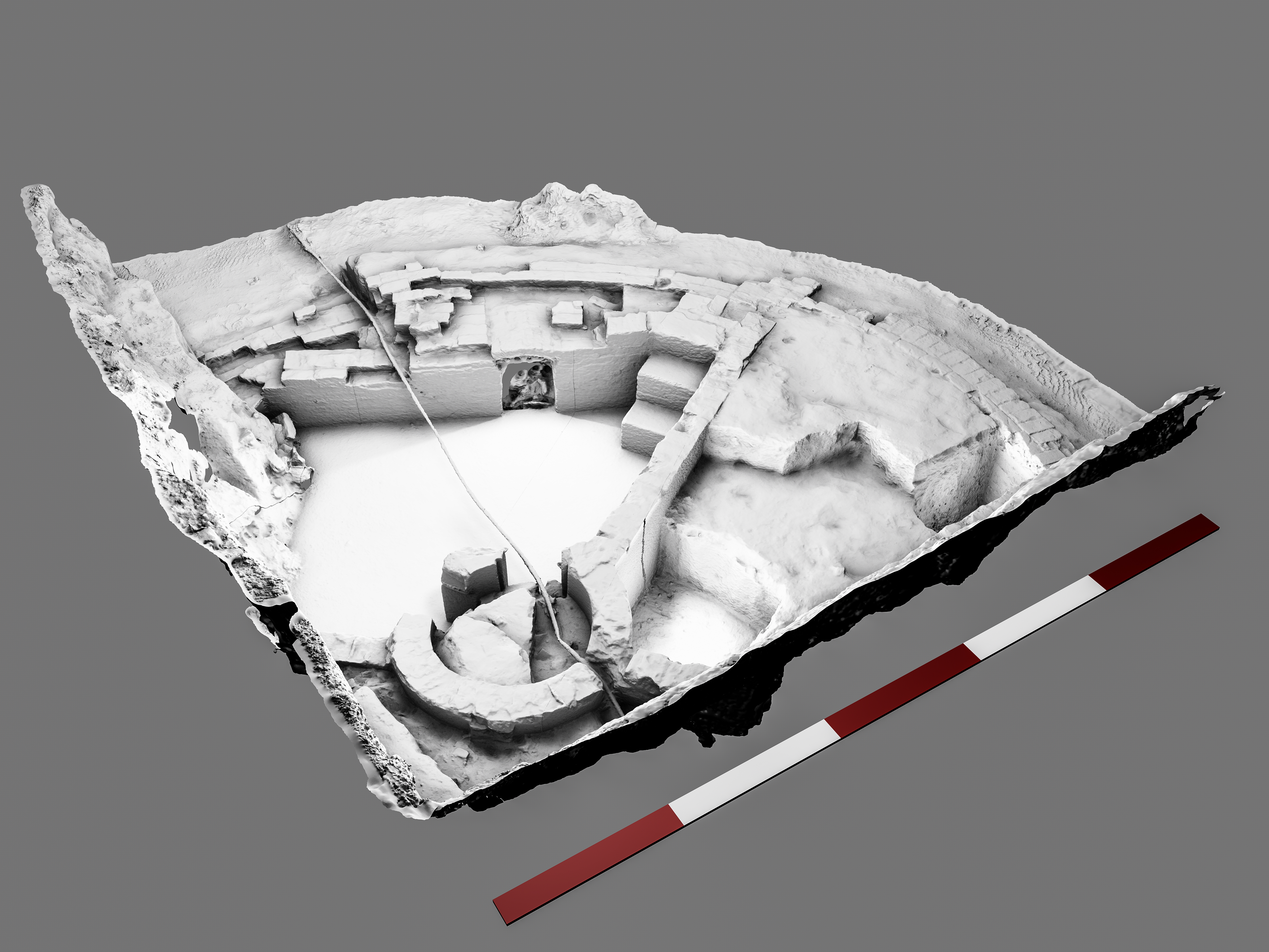

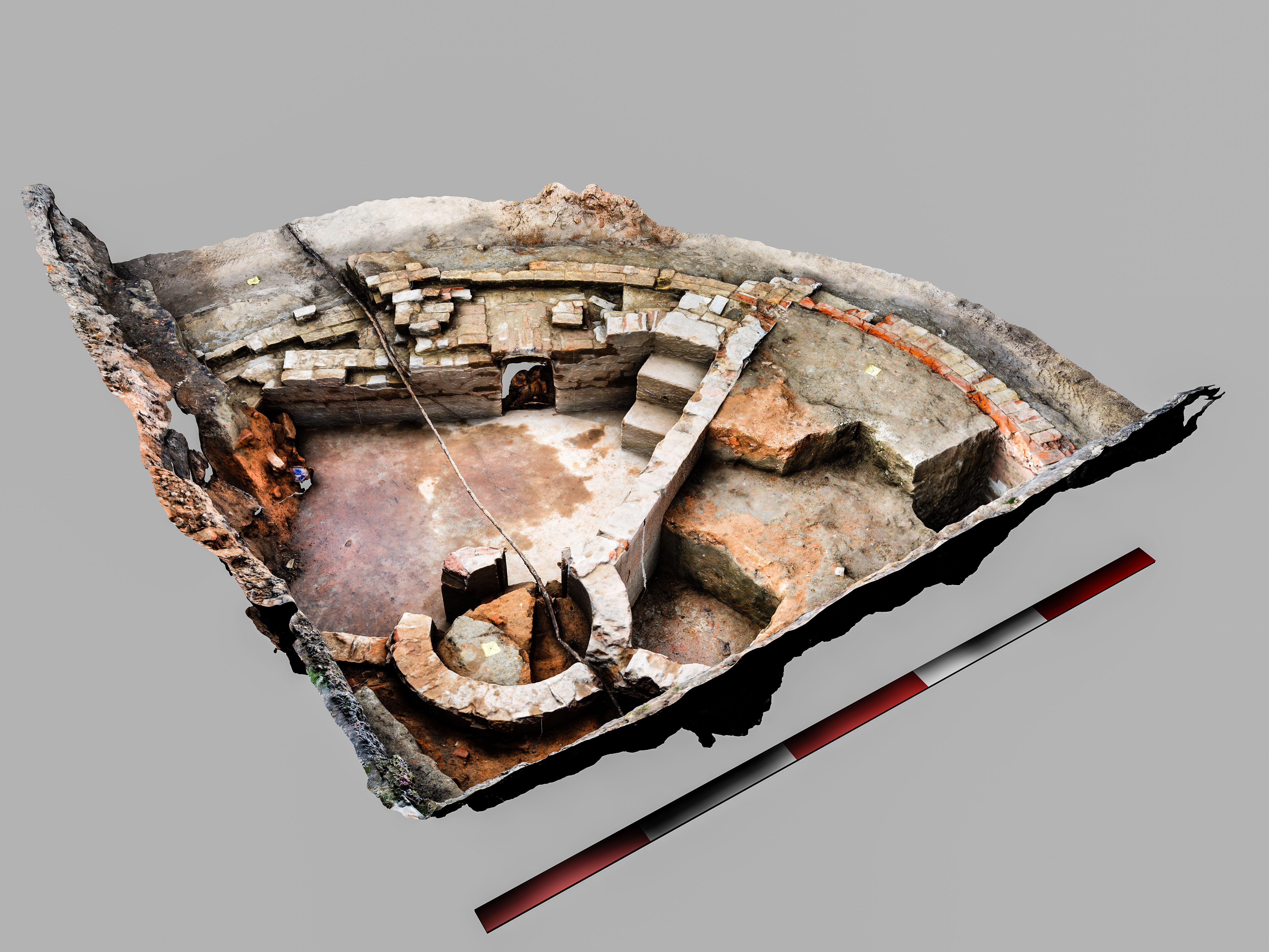
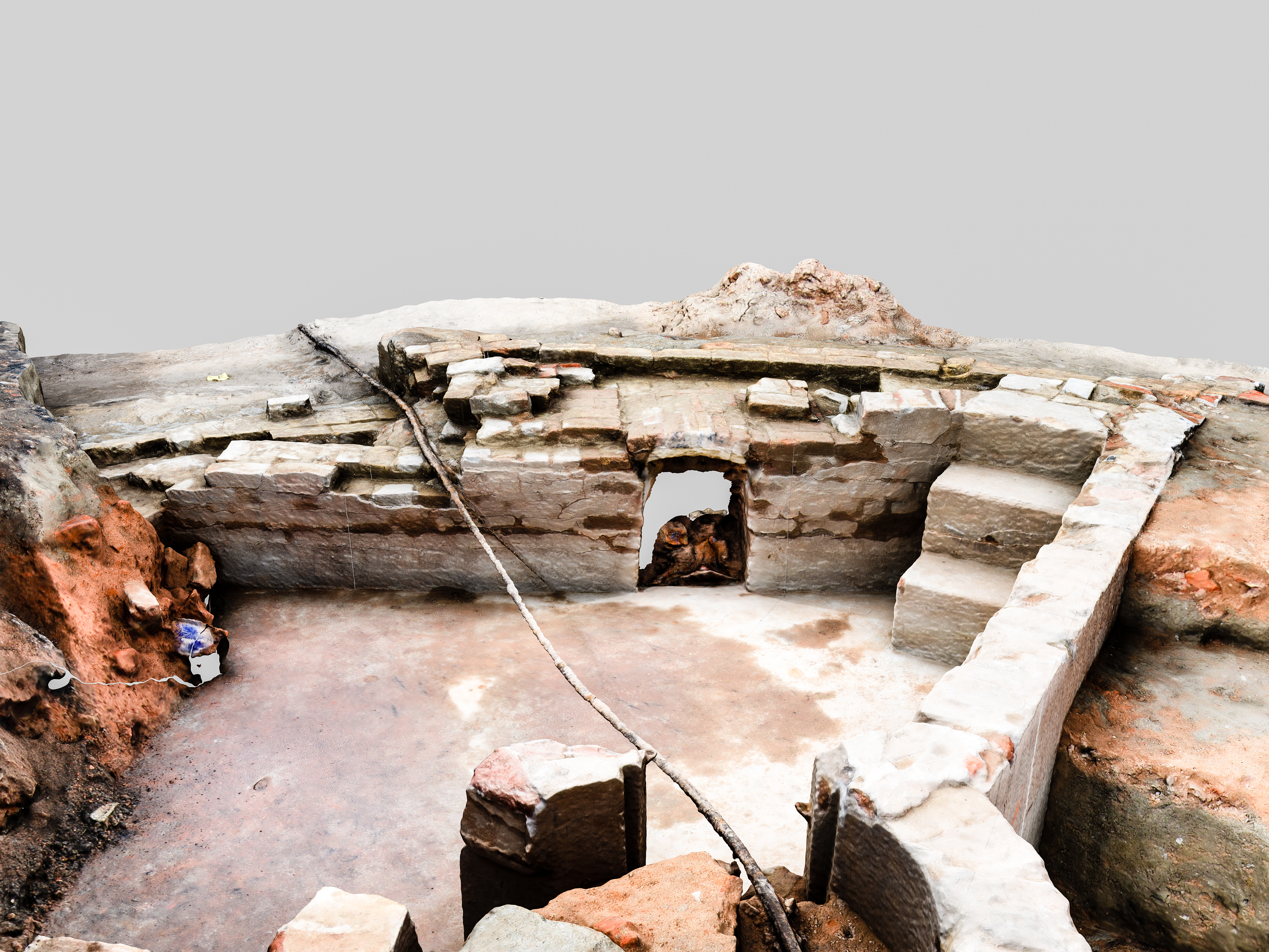
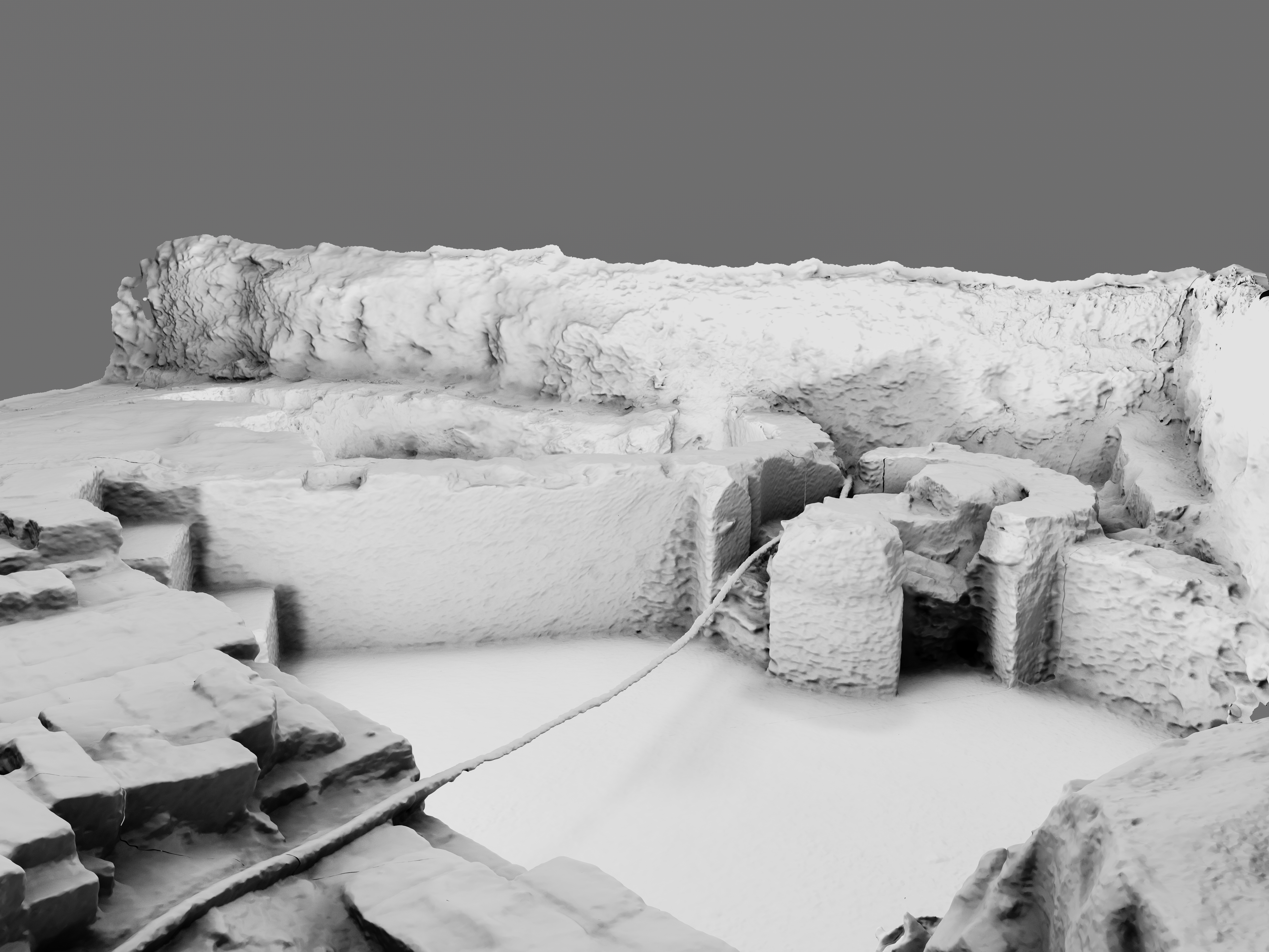
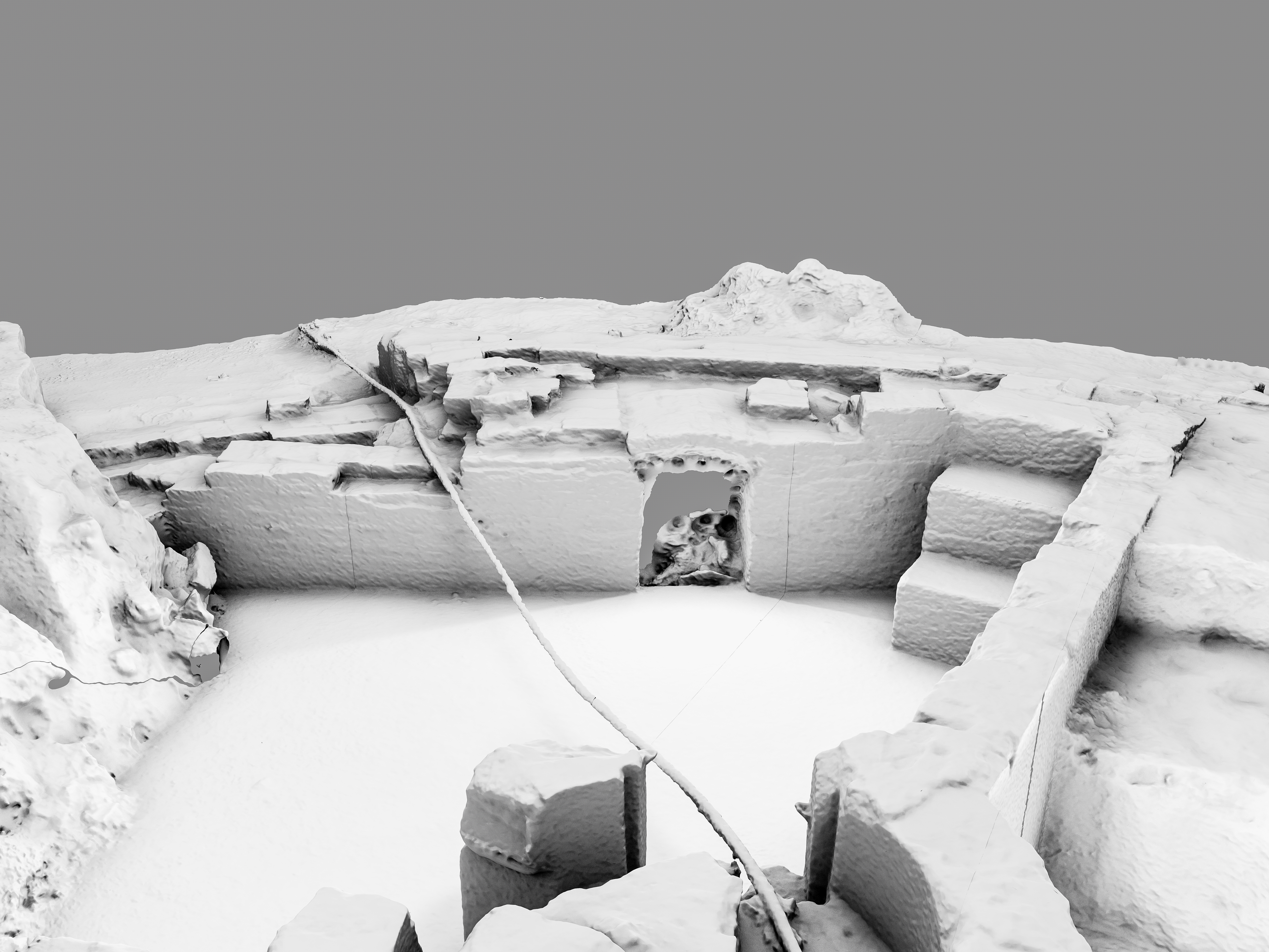
I also exported the data in several other formats, like 3DPDF, Obj, PLY and CSV, to widen the possibilities for further use.
Archiving data
Several 3DPDF objects were made, each with a different resolution of the meshes. The main reason for the use of this format is the high usability on every modern platform. The user can view, share and explore the objects by simply using a normal reader without the need of further knowledge of 3D Software. Also, it is a well-established format that hopefully will be available for at least the next 5 years.
The object files (Obj and ply) need some kind of special 3D software like cloud compare or MeshLab. They contain the complete models in their best mesh resolution and can be used for further analyzing and processing. These formats are like 3DPDF well established, and should be usable for several years in the future by a wide variety of CAD and 3D programs.
The biggest problem is lossless long term archiving. Paper, for example, is, under the right conditions, 100 years use- and readable. That’s an eternity compared to the ever-changing nature of digital media formats. Everyone who tried to open a 10-year-old database knows the horror of importing the datasets in a modern version.
This issue can, in part, be solved through simple text formatted files like TXT or CSV.
In these files, the 3D data is stored in form of coordinates sorted in columns and lines. It’s also possible to include further optional Information like Normals and point color. In theory, this raw format should be usable for a very long time because of its simple structure. And even after a hundred years, engineers should be able to reverse engineer the stored 3D Information.
The only alternative to a text-based long-term archive would be to transform the hole accumulated data archive every so-and-so years into a newer format. In regard to the growing number of 3D models, the not existing central archive and the needed effort, this is simply utopic.
I would greatly appreciate critic, other perspectives or questions, so leave a comment if you like.
Kontakt aufnehmen:
Haben Sie Interesse an 3D-Scans, Drucken, Rekonstruktionen, Workshops oder Fragen? Dann melden Sie sich!
